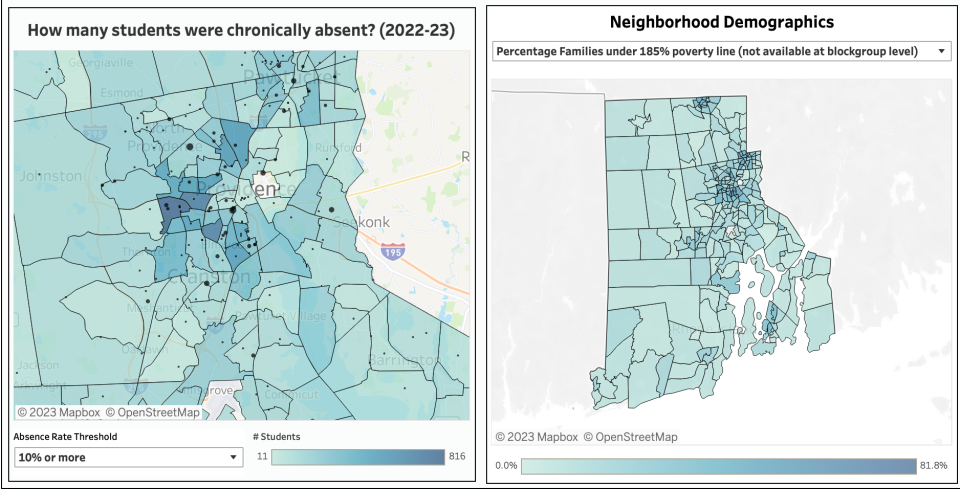Where are RI students most commonly absent? New maps, tools track the data
The Rhode Island Department of Education is revamping its attendance-tracking in an effort to stem the chronic absenteeism that has 29% of students missing significant amounts of school.
New data available to the public as of Thursday shows the communities in which students are chronically absent – missing 18 or more school days per year – and also the demographics and educational achievement of those students.
"It really does matter," Education Commissioner Angélica Infante-Green said of the new numbers. "It changes the landscape greatly. We move forward every year – incremental gains. That's what gets us there."
More: How Providence educators are hitting the streets to help get kids back in school
Where are students most absent in Rhode Island?
Online maps illustrating the data show students are most absent in the urban core around Providence, Pawtucket and Cranston, and tend to come from lower-income neighborhoods than those in other municipalities.

The tracking is part of the state's "Attendance Matters" campaign, intended to boost attendance and emphasize the consequences of absenteeism.
"Children chronically absent in kindergarten and first grade are less likely to read on grade level," said North Providence Mayor Charles Lombardi during the announcement at Stephen J. Olney Elementary School.
He warned: "Do not let your child become a negative statistic."
More: RICAS scores are out. Here are the takeaways.
State will begin rewarding districts with highest attendance
Gov. Dan McKee, who proclaimed this school year as "the year of attendance" in Rhode Island, said he closely monitors the data, and the state will announce the schools with the highest attendance each week.
"Attendance is not just about academic progress," McKee said. "It also plays a significant role in the social development of our children. It provides opportunity for social interaction and building friendships. This is why we're committed to an all-hands-on-deck approach to emphasizing the importance of daily attendance."
According to Infante-Green, kids who are repeatedly absent drop 19% to 26% in academic performance compared with peers who don't face chronic attendance issues.
Progress is being made, however. Department of Education data shows that during the 2022-2023 school year, $28.9% of students were chronically absent. That's down 5 percentage points from the previous school year.
This article originally appeared on The Providence Journal: RI schools tracking kids missing class - see where they are most absent

